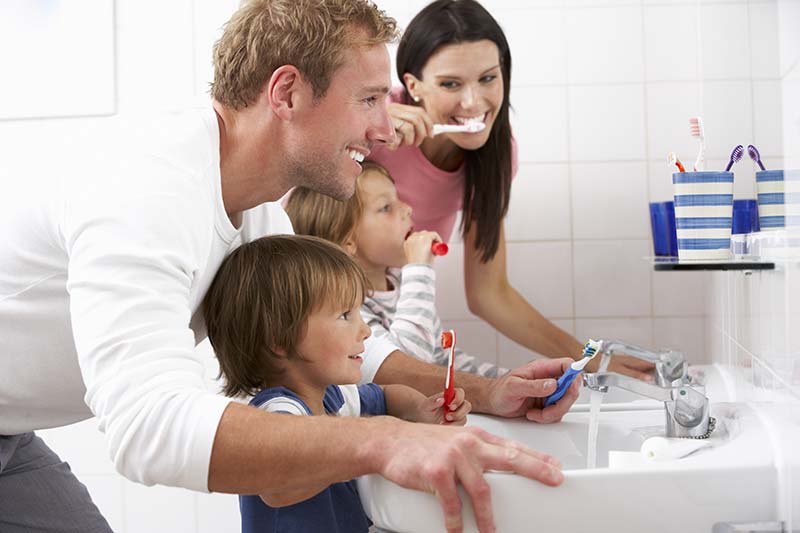It’s okay to not brush my teeth tonight. A thought that has crossed almost everyone’s minds at least once or twice. Well, it’s time to stop thinking that. Brushing your teeth is a crucial part of your day and it shouldn’t be skipped. We all know brushing is important, but we all have to ask ourselves – Are we brushing our teeth properly?
The American Dental Association (ADA), for a healthy mouth and smile, recommends you:
- Brush your teeth twice a day with a soft-bristled brush. The size and shape of your brush should fit your mouth allowing you to reach all areas easily.
- Replace your toothbrush every three or four months, or sooner if the bristles are frayed. A worn toothbrush won’t do a good job of cleaning your teeth.
- Make sure to use an ADA-accepted fluoride toothpaste.
ADA Suggested Brushing Techniques
- Place your toothbrush at a 45-degree angle to the gums.
- Gently move the brush back and forth in short (tooth-wide) strokes.
- Brush the outer surfaces, the inner surfaces, and the chewing surfaces of the teeth.
- To clean the inside surfaces of the front teeth, tilt the brush vertically and make several up-and-down strokes.
Brushing your teeth isn’t the only thing you should be doing to keep your teeth healthy and clean. In order to have a complete dental care routine the ADA suggests that you make sure to:
- Clean between teeth daily with floss. Tooth decay-causing bacteria still linger between teeth where toothbrush bristles can’t reach. This helps remove plaque and food particles from between the teeth and under the gum line.
- Eat a balanced diet and limit between-meal snacks.
- Visit your dentist regularly for professional cleanings and oral exams.
Habits of brushing your teeth should start young. If children learn to enjoy brushing, they will be able to prevent oral health problems in the future. Brushing and flossing properly is a great start to preventative dental care.
For more information on children’s oral health download Roseman’s “A Parent’s Guide to Preventing Tooth Decay” brochure here.



